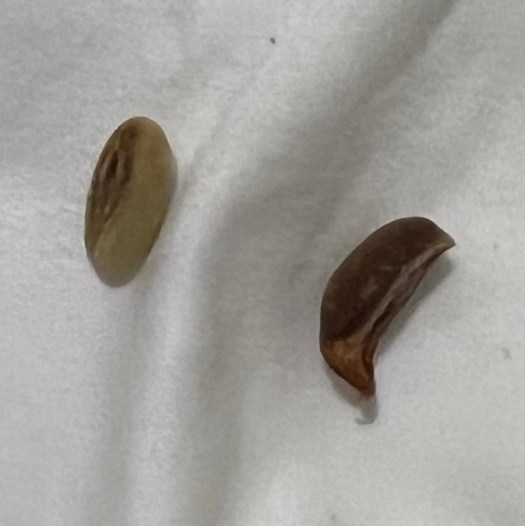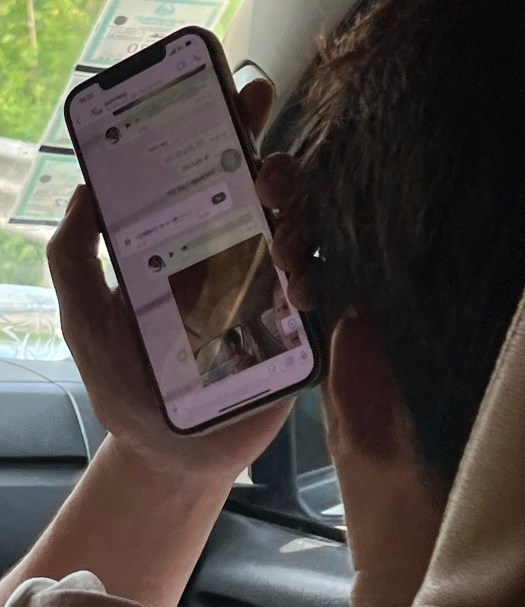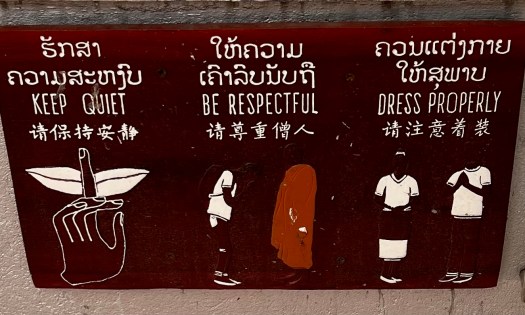
The song of coffee in paksong

Paksong is about 40 km east of Pakse, which is in the south of Laos and is known for its coffee plantations and excellent coffee beans. It’s very nice riding up there during the rainy season since everything is green, but traveling off the main road can be very tricky since the dirt roads are most often very wet and the fine red volcanic soil, good for coffee bean growing, is very dangerous for two wheel traveling. it’s extremely slippery. we slipped once putting a few scratches on the motorcycle.
At a local coffee shop, the baristo is very carefully creating a nice design on a cup of coffee with some milk.


The coffee processing factory.


Here are ripe red coffee beans on the bush.




Bopping Around Vang Vieng

To start out to this very beautiful place we booked a minivan to pick us up where we Dropped the motorcycle and drive us the next 2 to 3 hours to Vang Vieng. But the trip turned out to be a little bit more eventful and unusual than we planned. As soon as the minivan picked up all the passengers and then stopped off at their office in the center of Vientiane they change drivers and added a few more passengers. The new driver told the young Japanese fellow sitting in the front to move towards the back because they had a lady passenger who wanted to sit in front. After the Japanese customer moved to the back, the lady, Vietnamese, was told to sit also towards the back of the van while the driver instructed her male friend to sit in the front. From the accents we could tell that the new driver and the two customers were Vietnamese.
The driver spoke continuously in Vietnamese to the other passenger in the front. Nothing too unusual so far except the lie the driver told the Japanese customer. Then we got onto the expressway after going through the tollbooth, the driver pulled over and switched seats with the Vietnamese customer. I found this a little strange but, who knows, the passenger might’ve been an extra driver. Well, it turned out he wasn’t. After trying very nervously to get started in the minivan, continuing on the expressway, it seemed pretty certain he had no experience driving a minivan and was very uncertain on the road. After having almost 2 accidents driving the rest of the way to Vang Vieng I decided to ask the licensed driver of the minivan about the customer/driver. It turns out he was just a tourist, did not have a license to drive in Laos and could not speak Lao. What a strange trip. We survived.


































just after we left Koh Chang for Laos the main road on Koh Chang was partly destroyed, slid down the hill and destroyed my former bungalow on the beach


Parking in Pakse

Pakse, Laos, is a small city in the south, on the Mekong close to a coffee growing area. It is a place you should visit if you visit Laos. (https://en.wikipedia.org/wiki/Pakse)






















































the road to this farm was all dirt but a lot of it was just a mass of holes filled with water, extremely difficult for a small motorcycle to travel through. It was quite a challenge getting here without falling off into the mud




Waterfall near Luang Prabang – Kuang Si

https://en.wikipedia.org/wiki/Kuang_Si_Falls
















Here and there!

Kalasin, Thailand



not in any shape now to eat us










Luang Prabang




on the train















A Monk Disrobes

To “disrobe” is the process for a monk to leave monastic/temple life. In Laos a friend who was until recently a monk left temple life at the age of 25 after 10 years as a novice and 4 years as a monk. In some blog I will comment on why young men in Laos and Thailand become monks but this blog will focus on the “disrobing”.
I must explain there is a difference between the two ranks of those in temple life. Firstly someone joins the temple as a novice from the age of 12 onward. At the age of 20 or 21 a novice can be “ordained” as a MONK if he so chooses.
You might think it is a simple thing to just “leave” the temple and join the rest of society but in Laos the process is somewhat complicated.

First the monk must make up his own mind to “disrobe”. Normally he then consults with the family and discusses his decision. It could be the family persuades him to continue as a monk but in the end it is the monk’s decision to leave temple live.
Once the monk has made the final decision he will go to the Abbot of the temple and ask when the best day is for him to “disrobe”. Once the date is set the monk will fill out the document declaring his decision to “disrobe” and it will be “stamped” by the Abbot and the head of the temple district. This document is very important as I will explain.

In Laos everyone is required to get an ID card. Monks can have a national ID card with a photo of them in robes or an ID issued by the temple. These documents are used to apply for a Passport which identifies the person as a monk. When the monk disrobes the document stamped by the Abbot and temple office is required to apply for a “layman” (regular citizen) ID card and passport. Once that ID card is issued the ID card and the family book indicating the name and address of the people in the family are used to apply for a passport. The monk is registered in the temple “family book”. Once he leaves the temple he needs to be re-registered with the family in the family book as the next step.
The application for the passport needs to be filled out with a photo of the applicant as well as a color copy of the ID card. That application form is then stamped by the village head to verify the details of the application form. The person then goes to the “Consular Office” to line up to get an appointment for an interview which only confirms the details in the application.
If the monk opens a bank account the name on the account has “monk” printed after the family name and is the account name. When the monk disrobes he needs to change the name on his bank accounts to delete “monk” in the name on the account. The disrobing document is necessary to make this change.
In short a monk is identified throughout society as a monk and receives sometimes special treatment while they are restricted by their rules and regulations regarding their monk-hood and vows. In Laos and Thailand, if a monk is not in their required monk’s robes (required at all times) and stopped by police, the police will normally ask to see the ID card. Seeing the ID card identifying the person as a “monk” the police will turn the person over to the temple for discipline which often results in banishment from temple life. So there is a strong relationship between the monk’s social requirements and the documents they have identifying them.
In Laos, as in Thailand, the prefixes before the names are often used in spoken language. “Tao” is generally used for men younger than 40 or so. If a man is named SOMPONE, he is addressed as “Tao Sompone”. If Sompone disrobes as a novice he is addressed as Xieng Sompone while a monk who disrobes is addressed as “Tid Sompone”. This change in prefix will go on for a certain period of time by those who know him as a former monk.
By the way, you can recognize a monk who has recently disrobed; short hair and shaved eyebrows.
Here ends the blog on a monk “disrobing”.
Outlying parts of Luang Prabang


Nong Kiau is a really nice place to visit but be prepared to be a hiker and hill climber.





















Luang Prabang – Part 2

did you know that Laos was at one time a colony of France? Laos is on the east side of Thailand and the British colony of Burma was on the west side of Thailand. Did you know that Thailand played off the British and the French to get more territory? Did you know that the Lao and Thai cultures are very much the same? Did you know that many of the streets in Vientiane are called “Rue”, french for “street”? Did you know that the Lao and Thai languages, written and spoken, are very similar?





























Luang Prabang – The Old Capital of Laos

Getting there means riding the new Lao/Chinese railway fast train which says it’s supposed to be running at 127 km/h. But getting on the train is a complete mess. First you have to line up to get all your documents checked including a vaccination certificate, ID card (passport) and ticket. Then you have to sit and wait one hour until they tell you to line up again to check tickets to get to the platform. Of course the tickets are checked again once you get to your seat. The system was developed by the Chinese and implemented by Lao authorities. The ride was nice.



































